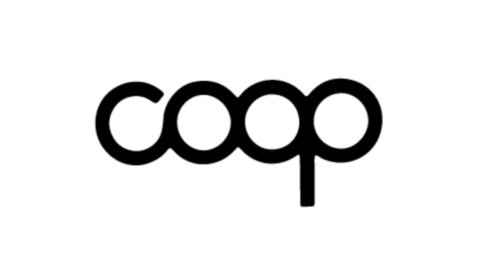It is no coincidence that this exhibition – after Milan, the Museo del Novecento and Florence, the Museo degli Innocenti – is held in Reggio Emilia.
Albe Steiner was responsible for the design of the original Coop brand of 1963, its application on coordinated packaging and the setting up of the first Coop self-service warehouse, which was precisely the one in Reggio in Corso Garibaldi, designed with a view to identifying the departments and of the products. The same Coop brand was then redesigned by Bob Noorda in agreement with Lica Steiner.
Not only was the first Coop warehouse born in Reggio, but the cooperative movement itself was born, which for a century and a half has helped shape the social and economic history of this area.
What makes this exhibition "special" and even more "appropriate" for Reggio Emilia is the choice of the place where to set it up: the ancient Synagogue of the city of Reggio Emilia, recently restored by the Municipality. In 1938 Albe Steiner marries Lica diminutive of Masal (Hebrew name corresponding to Matilde) and together they distinguish themselves for the professional and civil commitment that has marked their lives, which began during the dark years of fascism, cemented in the resistance struggle and then continued with education and social communication.
The nineteenth-century building in via dell'Aquila – of extraordinary beauty, with a luminous and monumental interior, decorated with columns and frescoes – has regained, with the restoration, its ancient splendor and the forms heavily compromised by a bombing during the second conflict.
It is this large, silent classroom, in its austere elegance, that naturally welcomes the creations of the graphic duo.
The exhibition, curated by Anna Steiner and designed by the Origoni-Steiner studio, offers an overview of the work of what is recognized as one of the most fruitful professional and personal partnerships in Italian graphics. The production of their Studio LAS is presented from the first works of 1939 up to the Liberation and the trip to Mexico (1946-1948), in a narration marked by the different sections - graphic and photo-graphic research, publishing, advertising and installations, brands, product presentation, posters and graphics of civil commitment, professional training - to finally also touch Lica's activity, from 1974, the year in which Albe died, to his disappearance, in 2008.
Their personal history, their "intellectual" union has seen them so inseparable that they are called by themselves and by their friends the 'Licalbe', a single identity. Their work was characterized by what has often been defined as a poetics of optimism, by a declared trust in the present and in the future, believing that personal, professional, didactic commitment could mark the difference and an abysmal distance from the dark of war and fascism.
In 1939 they opened a graphic studio together and worked on the anti-fascist clandestine press. As soon as the war was over, they were among the founders of the Convitti della Rinascita, curated two exhibitions at Palazzo Reale on Liberation and Reconstruction and were graphic editors of "Il Politecnico" directed by Elio Vittorini. They then leave for Mexico to reunite Lica's family, and find themselves working with muralists including Siqueiros, Rivera and others and Hannes Meyer, one of the exiles of the Bauhaus school. They returned to Italy to participate in the first free elections of 1948, where they resumed their professional work.
The Steiners were undoubtedly protagonists and interpreters of the Italian cultural renaissance after the war, together with intellectuals such as Vittorini and Calvino. A special memory of Albe is owed to Calvino the day after his death in the pages of L'Unità "for Albe the pleasure of formal invention and the global sense of the transformation of society were never separate".
Anna Steiner, daughter of Albe and Lica, teaches at the Politecnico di Milano, architect, works in the field of installations and graphics in the Origoni Steiner studio, carries on the legacy of her parents and bears witness to their contribution to twentieth-century culture by spreading their pedagogical and democratic ideals and their still innovative design ideas.
The exhibition that the Palazzo Magnani Foundation, together with Coop Alleanza 3.0, and the curator Anna Steiner are proposing in Reggio Emilia takes the viewer on a journey into the recent past and into the extraordinary place where the union between two people becomes the engine of new worlds.
The exhibition is the last part of a project to disseminate the life and works of the Steiners promoted by Ardaco and supported by Coop, which began seven years ago with the making of the documentary film Linea Rossa. Together for a Project for Change by Enzo Coluccio and Franco Bocca Gelsi (Ardaco-Orda d'Oro, 2009) in which an intense Lica left her last direct testimony, together with that of friends, family, artists such as Arnaldo Pomodoro and Francesco Leonetti. (The film will be present in the exhibition).
“With this exhibition – says Davide Zanichelli, President of the “Palazzo Magnani Foundation” – our Foundation takes on an important role for the city and the territory. In fact, we only leave the halls of our historic exhibition venue to animate different spaces, in agreement with the Municipality. It is the recognition of the work that Palazzo Magnani has done in recent years and it is the start of a cultural journey that we intend to make original, stimulating and shared”.





